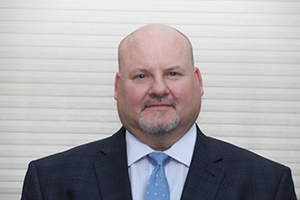Thermal Imaging technology has come a long way in the past four decades. Originally developed to spot downed pilots during the Vietnam War by detecting their body heat from a camera mounted on a helicopter, today the technology is used in many applications from thermography (a process of measuring energy emitted from a surface) to security (using the measured heat or energy to produce an image for detection).
Traditionally, using thermal technology for thermography (radiometrics) has meant sending a highly-trained thermographer to a site with a thermal imager to check problematic areas or equipment. The thermographer captures an image, determines the precise temperature and uses the image to interpolate various conditions in the area. The drawback of this approach is that these cooled cameras are expensive to own and using the thermography services are expensive as well.
But now there’s another cost-effective option. Recently, thermal camera manufacturers that already use less expensive uncooled sensors have introduced additional processing abilities into their thermal security to perform basic temperature measurements. These less expensive uncooled sensors can provide users with a very usable temperature measurement (within plus or minus 5oF) on the same chip used by thermal security camera. Unlike cooled thermal imagers, these dual-purpose cameras are permanently installed onsite so they can provide surveillance and critical temperature monitoring 24/7.
What is the advantage? Just like in our bodies, heat increases usually mean something is wrong. Catching these heat increases early and automatically could save big money in the case of repairs or shutdowns. Using a lower-cost alternative to simultaneously evaluate critical areas, secure your assets and provide process monitoring is just plain smart.
Sharing this advanced technology between departments not only makes it easier to justify the investment, it also doubles the return.
From a security perspective, these new uncooled thermal cameras are ideal for detecting people, objects and incidents in shadows, complete darkness or other challenging conditions such as smoke and dust. Critical infrastructures can use them for perimeter or area protection because they provide a powerful and cost-effective alternative to radio frequency intruder detection, electrified fences and flood lights. In the dark, thermal camera surveillance remains discreet since they don’t require artificial lighting to operate effectively. This can be a significant advantage in detecting copper thieves at remote substations. In public areas, thermal cameras can help secure dangerous or off-limit areas such as tunnels, railway tracks and bridges. Indoors, they are able to detect humans roaming the halls, whether after business hours or during evacuation emergencies such as a fire.
From a process engineering perspective, these new uncooled thermal cameras are ideal for continuously monitoring temperature variances – upper and lower limits as well as the speed of temperature changes. If they detect variances outside the threshold they can trigger an alarm. The onboard analytics uses an isothermal color palette to highlight specific temperatures in the scene as a visual aid to whoever is monitoring the camera. An operator can also use the camera to capture spot temperature readings by clicking anywhere in the image frame. The camera will automatically measure the temperature within that window. This feature is particularly useful for visualizing hot spots and identifying overheating equipment and blocked or leaky pipes. The cameras can also provide an early-warning sign that self-igniting material – such as dust or oily rags – are about to combust. Other possible uses include checking tank levels, monitoring flare stacks at refineries, and predicting transformer and switch gear failures at power substations to forestall wide-scale outages.
What makes these thermal cameras so unique is that they can perform both applications simultaneously. As shared network-based technology, security can be monitoring the live video for intruders at the same time process engineering is monitoring the live video for signs of equipment failure. The thermal cameras can remain stationary or be programmed to operate on guard tour mode, panning across a wide area at preset intervals. For trend monitoring, they can be programmed to trigger an alert when the temperature gradient inside a designated window within the scene increases or decreases. If the situation warrants it, a thermographer could then be dispatched to the location to take more precise measurements with their cooled thermal imager.
Nowadays businesses are always looking for ways to stretch their capital investment dollars. With dual-purpose thermal (radiometrics) surveillance cameras companies can both safeguard their property from intruders AND avert potential equipment failures using a single device. And because these cameras run 24/7, facilities can maintain resilience knowing that their critical assets are always under watch.
 About the author:
About the author:
Joe Morgan is the Business Development Manager, Critical Infrastructure, Axis Communications, Inc.
Scott Ellyson, CEO of East West Manufacturing, brings decades of global manufacturing and supply chain leadership to the conversation. In this episode, he shares practical insights on scaling operations, navigating complexity, and building resilient manufacturing networks in an increasingly connected world.